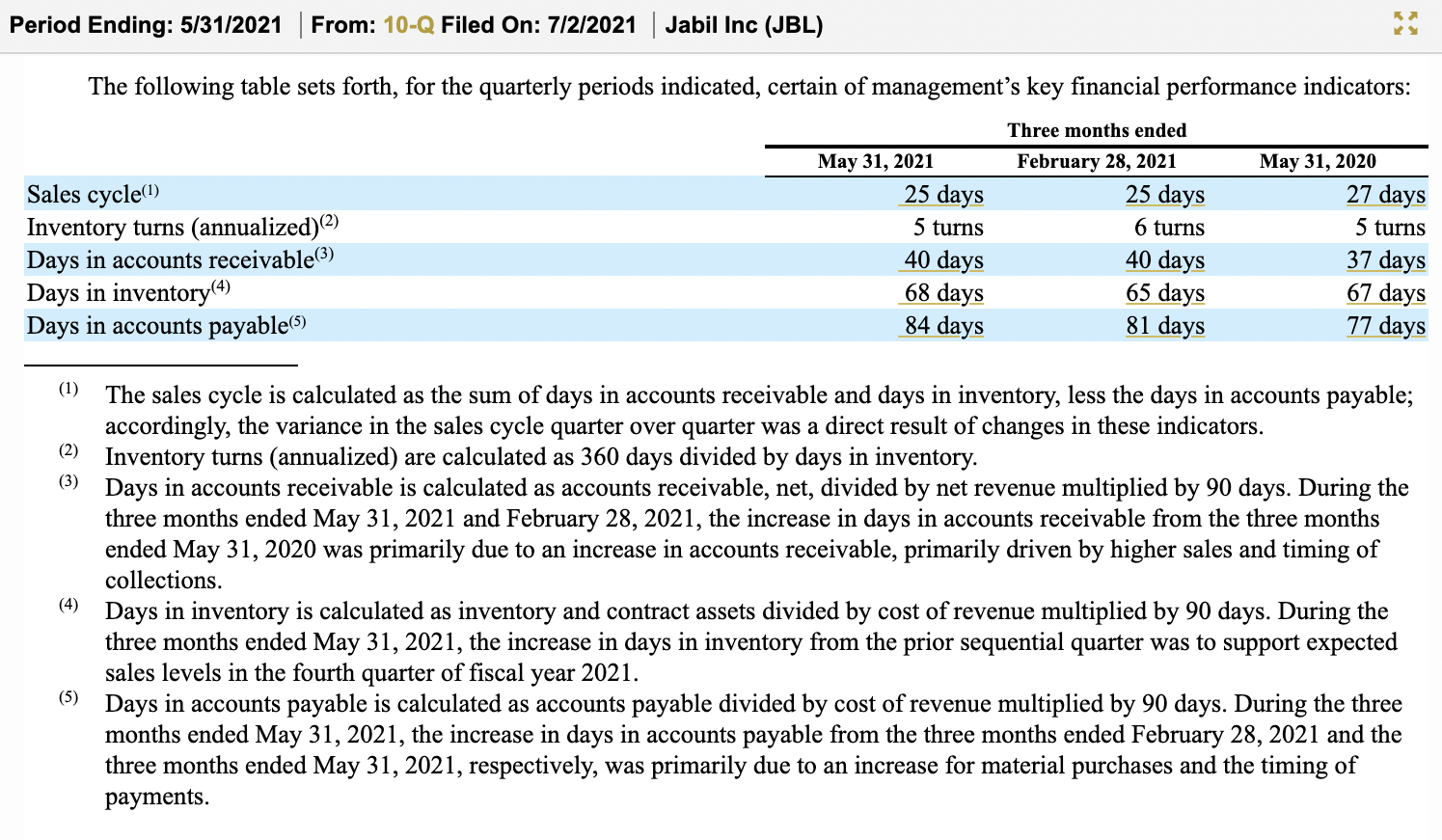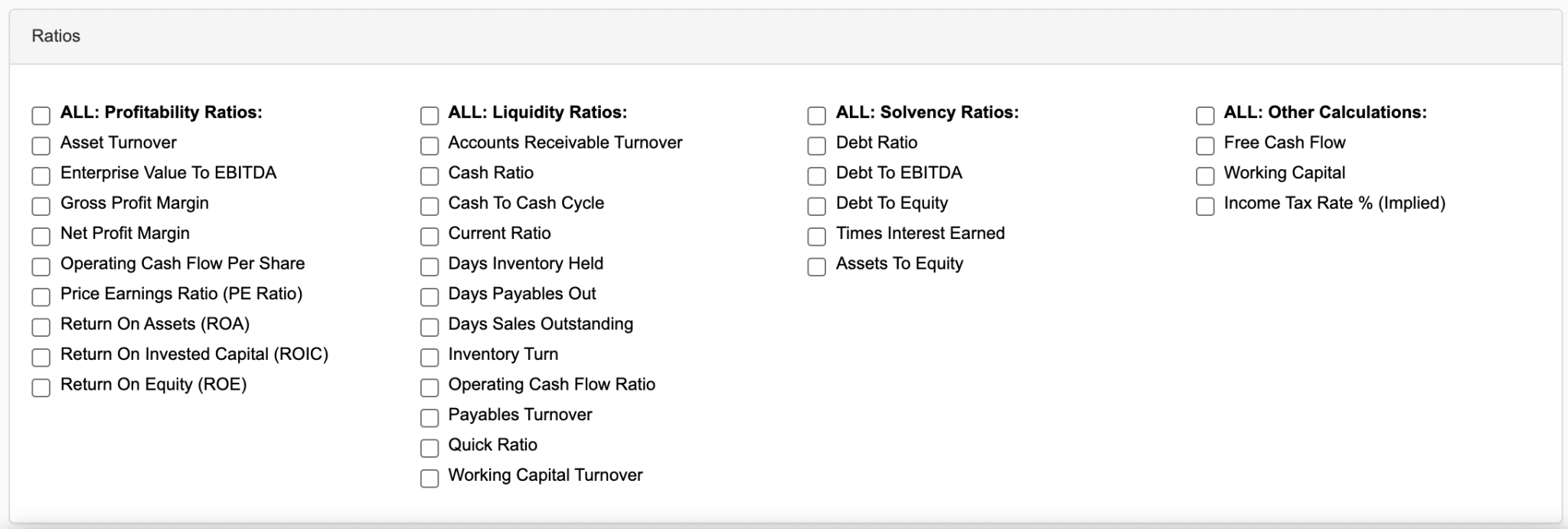Manufacturing services business Jabil Inc. ($JBL) filed its latest quarterly report the other week, and we were intrigued to see that in the footnotes Jabil also discloses numerous key performance metrics to help investors see how tight of a ship management runs.
You can often find KPIs in the Management Discussion & Analysis section of the filing, and that’s where we found the numbers for Jabil. The company discloses five KPIs, as shown in Figure 1, below.

As you can see, underneath the KPI numbers Jabil also includes a description of how each metric is calculated. That’s in accordance with SEC rules, which say that a company can report a wide range of metrics so long as the firm (a) explains how the metric was produced; and (b) calculates and reports the metric consistently from quarter to quarter.
We call out Jabil’s reporting of KPIs just to remind everyone that Calcbench also lets you find a wide range of performance metrics even when a firm doesn’t report those KPIs directly — because the most important KPIs are based on specific GAAP disclosures, and Calcbench has those underlying data points, which means we can calculate various KPIs, liquidity ratios, and related metrics for you.
Finding the KPIs
You can find those numbers in several ways.
Our Multi-Company page allows you to search KPIs for one or more firms, by entering the name of the KPI in our standardized metrics field on the left side of your screen. For example, we searched “Days Payable Outstanding” for Jabil’s second quarter numbers, and received a result of 81.03. That matches the 81 days that Jabil reported for its quarter ending Feb. 28, 2021 almost exactly.
You can also then trace that KPI number to see how Calcbench arrived at it. (We always like to show our work around here.) Figure 2, below, shows how we found the 81.03 number for Jabil.

One point to note is that the exact wording that one firm uses to describe a KPI might differ from other firms, or from what Calcbench itself tracks. For example, Jabil uses “Days in Accounts Payable” for “Days Payable Outstanding,” but the formula to calculate them is the same.
So from time to time you may need to confirm that the KPI a firm reports in the footnotes is indeed the same KPI we calculate automatically. You can do that by double-checking what the firm says in the footnotes and comparing it to our number via the Trace feature. Investopedia is also a great resource if you want to see what goes into a KPI and other names it might be called.
You can also search for KPIs and other ratios using our Bulk Data page, which is sometimes the better choice if you want to research a large number of firms across long periods.
If you visit that page and scroll to the bottom, you’ll see a long list of KPIs that Calcbench can track. See Figure 3, below.

Just define the number of companies you want to search, across what periods of time, at the top of the page. Then check off the relevant KPIs listed in Figure 3 here, and hit Export. That’s all there is to it; you’ll get an Excel spreadsheet with the results in a few minutes.